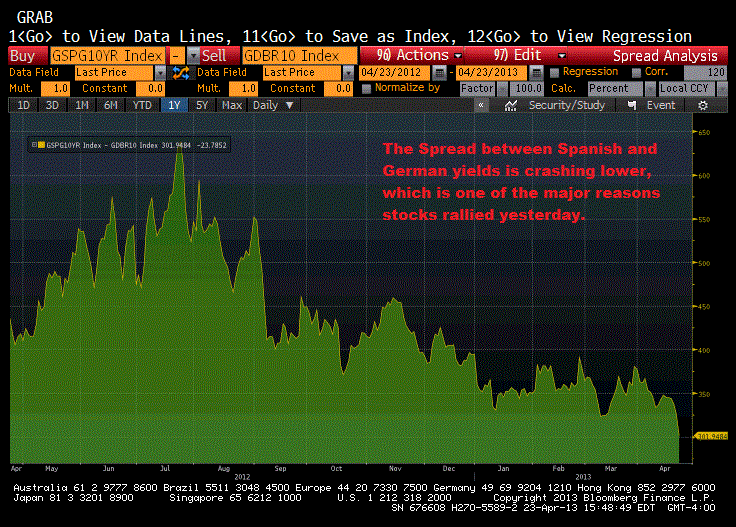Economics
Last Week
Economic data was almost universally disappointing last week, although it obviously didn’t have the expected effect on the market (more on why below).
The big numbers of last week, the global flash PMIs, all either missed expectations (China, U.S. and Germany) or met low expectations and remained below 50 (EMU), signaling contraction. The flash manufacturing PMIs certainly showed that the slowdown in growth in the global economy seen in March has so far carried over into April.
The durable goods number was also soft, as new orders for non-defense capital goods ex. aircraft (NDCGXA) increased slightly in March, but only after February data was revised lower. This implies that along with the consumer, businesses scaled back spending and investment in March.
In Europe, the German IFO survey also missed expectations, and between that and Germany’s weak manufacturing PMI, evidence is mounting that shows the mighty German economy is finally being dragged down by the rest of Europe.
Finally, Q1 U.S. GDP was a bit of a mixed bag. Negatively, the headline showed 2.5% annual growth in Q1 vs. (E) 3%, and final sales of domestic product, which is GDP less inventories, rose 1.5%. (It’s helpful to exclude inventories because big inventory accumulation subtracts from next quarter’s GDP as de-stocking occurs).
Positively, PCE, personal consumption expenditures, beat estimates at 3.2%, so the consumer kept spending in Q1, although that’s being discounted a bit because of the soft March retail sales data.
So, bottom line on GDP is we remain in a very slow growth economy, just as we’ve been for the last several years.
This Week
This is a very important week, plain and simple. First, final readings of global manufacturing PMIs are released Tuesday night (China) and Wednesday morning (Europe & U.S.). While some of the power is taken out of these numbers given the flash estimates from last week, they will still move markets.
Second, it’s jobs week. Friday brings the April jobs report, but before then we’ll have the ADP report Wednesday, and weekly claims and the Challenger layoff report Thursday.
Third, and most importantly, the Fed, ECB and Bank of England all have interest rate meetings Wednesday (Fed) and Thursday morning (ECB and BOE).
These meetings are the most important events of the week. Markets didn’t decline on the weak economic data from last week due to the perception (and expectation in the case of the ECB) that central banks are going to either stay the course with current QE programs and other accommodation, or become more accommodative. That expectation makes the weak data from March/April somewhat irrelevant, because if CBs stay “easy” or get “easier” it’s assumed that the weak economic data will just be a bump in the road of a greater recovery.
The ECB in particular will be the most watched CB this week. A 25-basis-point rate cut is fully priced in at this point, so at a minimum that’s what the market is expecting. I’ll preview it more when we get closer, but the ECB better reveal unconventional easing measures or strongly hint they are on the way, otherwise there will be some substantial disappointment.
At the Fed, the tide appears to be turning with regard to the discussion about ending QE this year. Given the soft economic and inflation data recently, the market will be looking for some “dovish” commentary from the Fed about being committed to keeping QE on as long as necessary.
As stated, this week is very important from a macro perspective. The bad economic data was overlooked last week because of expectations for central banks; now they need to deliver (or the data needs to get better).




